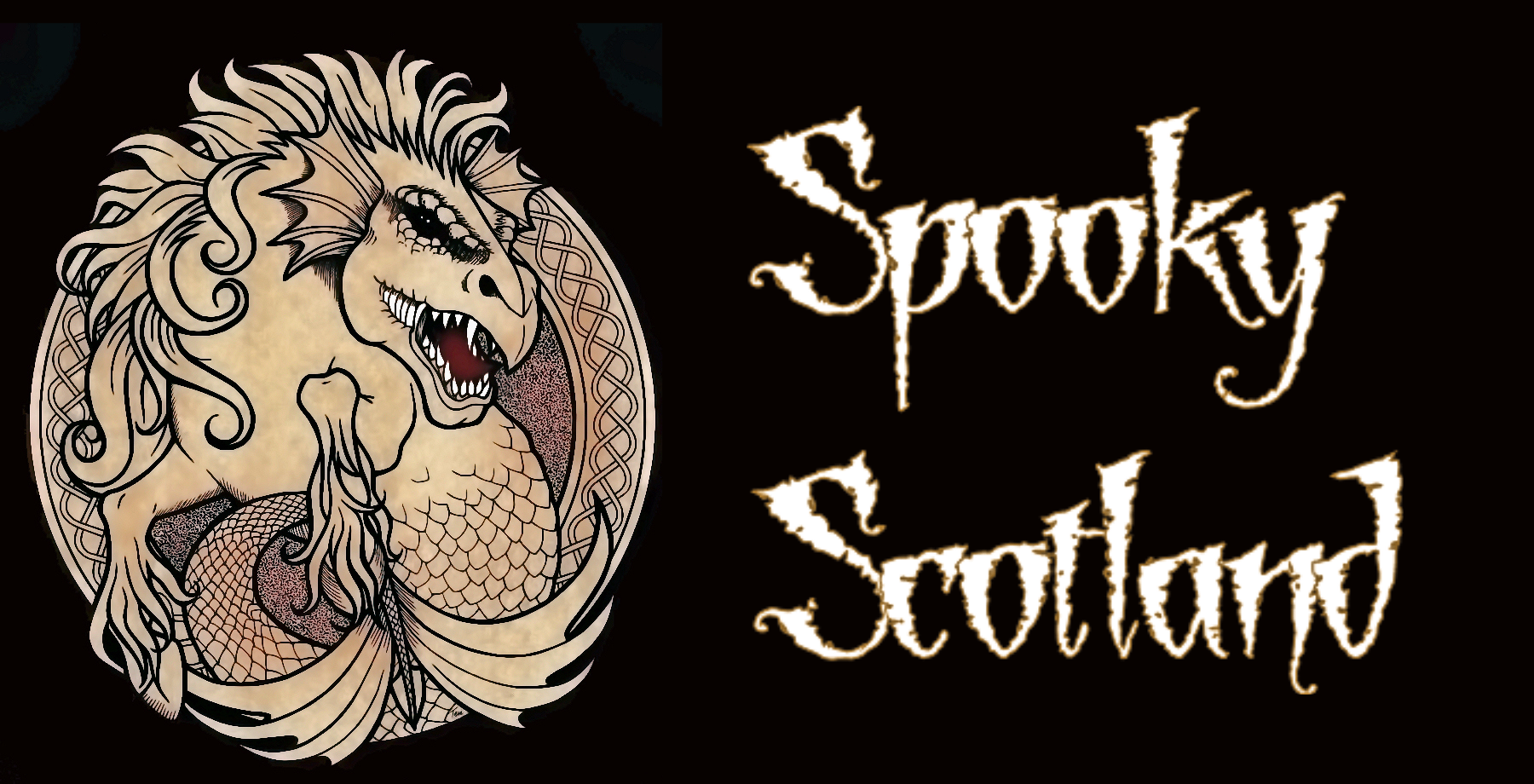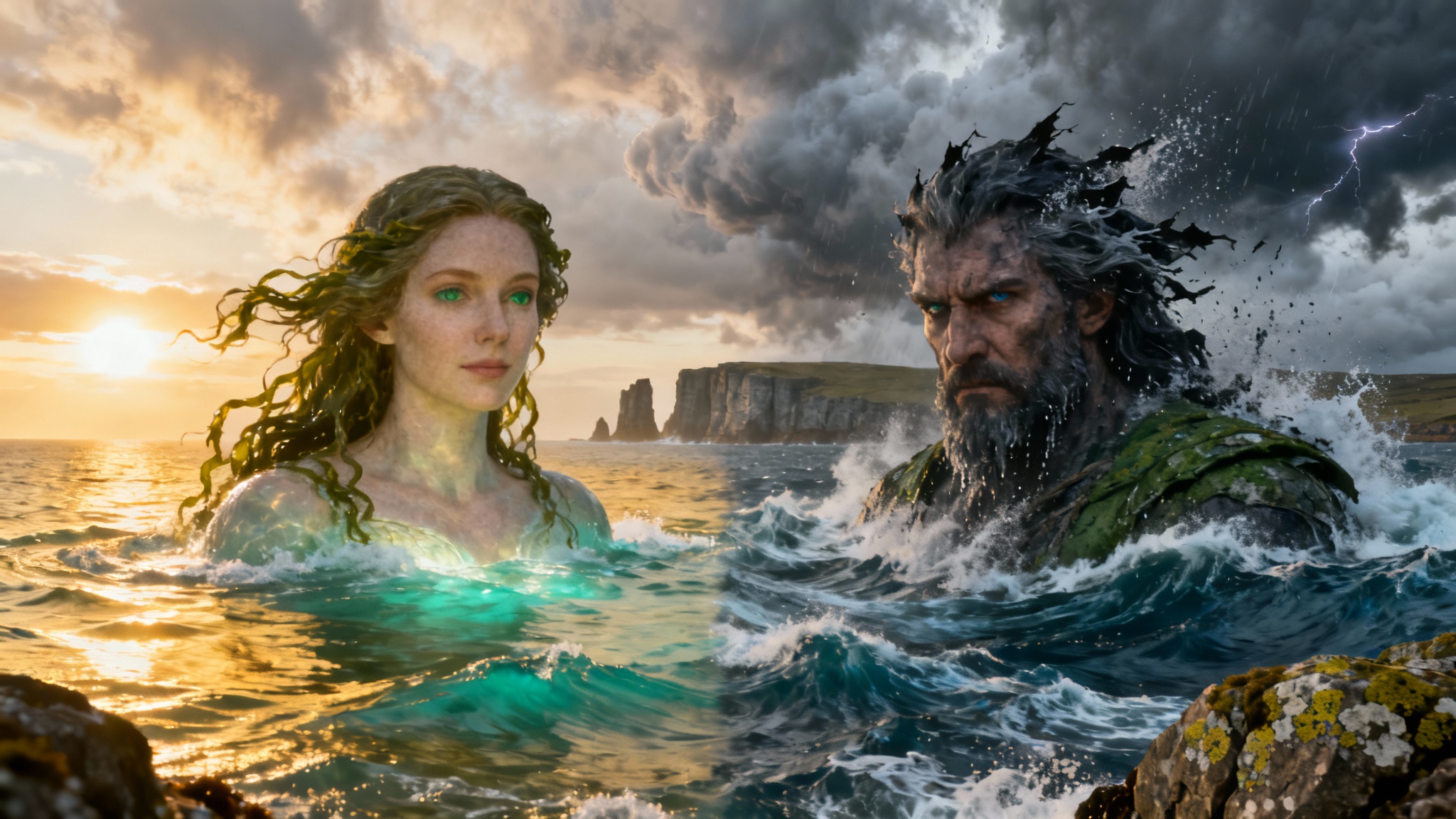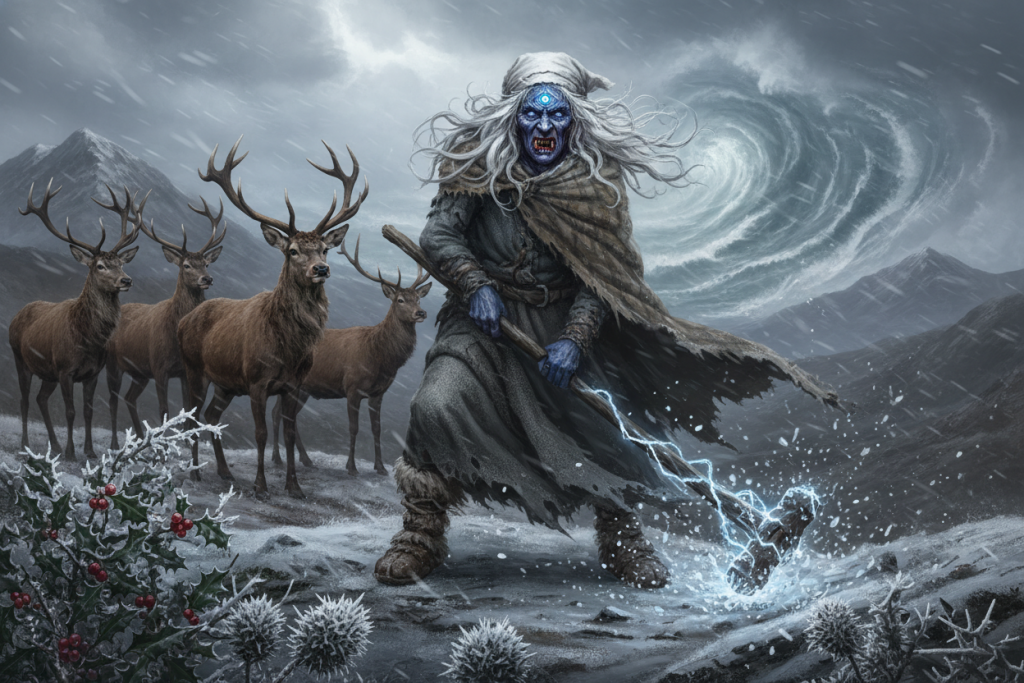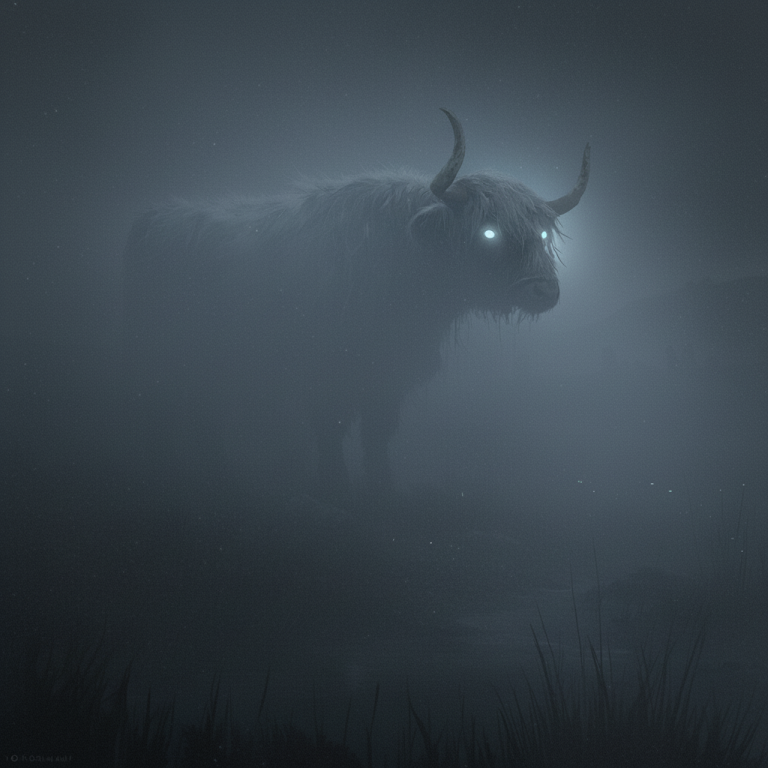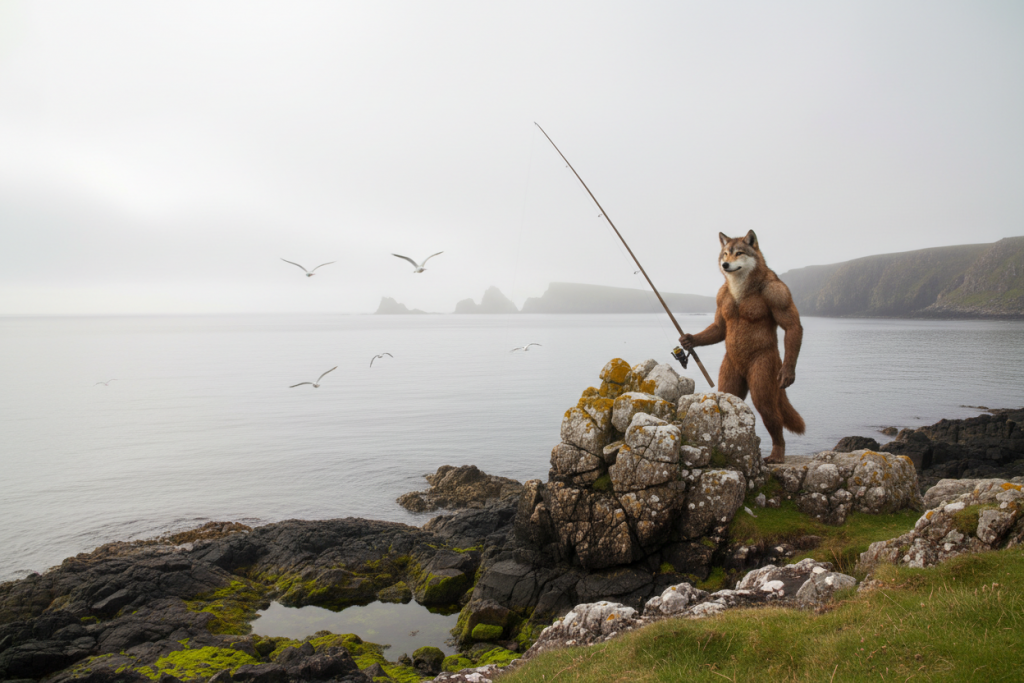General Information:
The Sea Mither is a benevolent spirit of Orcadian folklore. She is associated with the summer months when she calms the sea, warms the waters and protects seafarers from demonic forces. Every year, she is locked in a seasonal struggle with her powerful rival, Teran, the spirit of winter. Their battles mark the change of seasons in Orkney and Shetland, and fishermen once prayed to her for safety and good fortune.
Appearance:
Sea Mither is said to be invisible to human eyes. Unlike the monstrous nuckelavee she restrains, she has no commonly given physical description. She is thought of more as a presence felt in the world rather than a figure that can be seen. Calm breezes, warmer waters and gentle seas are considered the signs of her presence.
Habitat:
The northern seas around the Orkney and Shetland Isles. She rules the waters during the summer months and retreats during the winter when Teran takes control.
Behaviour:
Sea Mither exerts a positive and protective influence. She calms storms, warms the seas and allows fish stocks and sea creatures to thrive. She is protective of fishermen, with Shetland tradition recording that they sought her blessing to shield them from the Devil.
Shape-shifting Ability:
There is no evidence from folklore that she can change shape. Sea Mither is more often described as a formless spirit tied to the natural conditions of the sea and air.
Variant:
The Sea Mither is unique to Orkney and Shetland traditions. However, folklorists have noted that she and Teran are similar to seasonal spirits in many other cultures, representing personifications of summer and winter such as the Cailleach and Bride in Gaelic Folklore.
Location in Scotland:
Primarily, the Orkney Islands, with traditions also known in Shetland. Mentions of the use of “Mither” as “mother” are also known in Caithness.
Stories/ Sightings or Experiences:
The central story revolves around the recurring battle between Sea Mither and her enemy, Teran. Each spring, around the vernal equinox, the two spirits fight for control of the seas. This struggle, known as the Vore Tullye or “spring struggle”, is said to explain the violent gales and rough waters common in March. The Sea Mither always wins, confining Teran to the ocean depths, and for the rest of the summer, the seas are calmer, warmer and fertile.
During this period of calm, she performs important labours. She restrains the demonic nuckelavee, a horse-like sea monster feared by Orcadians. She warms the sea waters, empowers fish and sea creatures to reproduce successfully and transforms the gales into soft summer breezes. These efforts, however, come at a cost. The strain of keeping Teran imprisoned and maintaining balance drains her strength across the summer months.
As autumn approaches, Teran senses her weakness and struggles free. This conflict is known as the Gore Vellye or “autumn tumult”. The weather changes as storms and darker skies return. At this point, Teran regains mastery over the seas and Sea Mither is driven away to rest. Where she goes is unknown, but islanders trusted that she would always return with the spring.
In older times, fishermen in Shetland were recorded as whispering quiet petitions to her before heading to sea, asking for her protection and a safe catch. In oral tradition, recordings also preserve verses about her battles with Teran. The cry of the winter winds was said to be Teran’s anger as he fought against her bonds.
Purpose of the myth or Legend:
The legend personifies the cycles of the seasons. Sea Mither represents summer, calm seas, fertility and safety, while Teran symbolises winter, anger and destruction. The yearly struggles between the two spirits provided a way for pre-scientific communities to understand and explain the violent changes in Orkney’s weather patterns. The story also reflects reliance on the sea for survival, with fishermen appealing to Sea Mither for protection against storms and for bountiful catches. Folklorists such as Walter Traill Dennison and Ernest Marwick interpreted the Sea Mither and Teran as personifications of natural forces.
